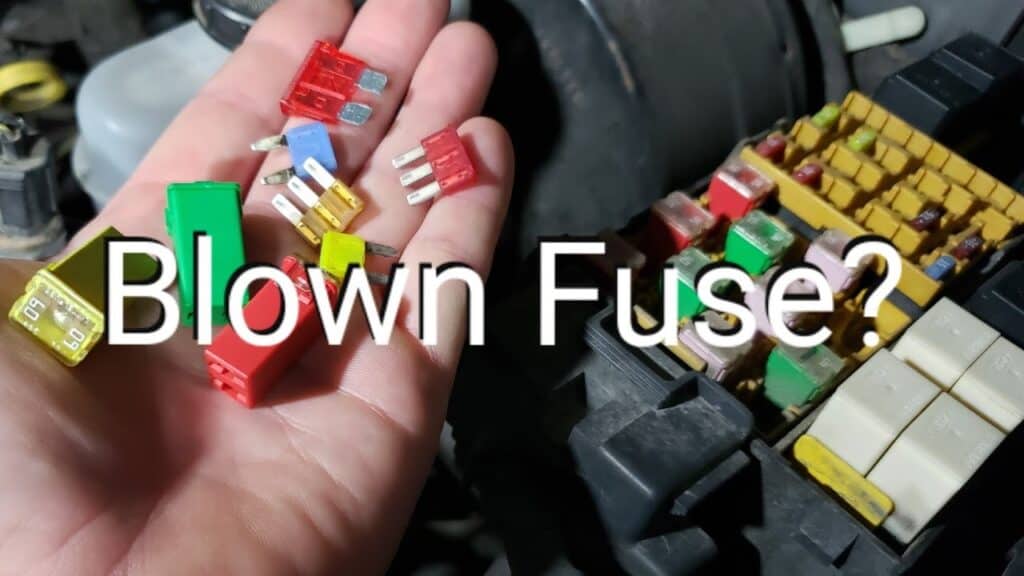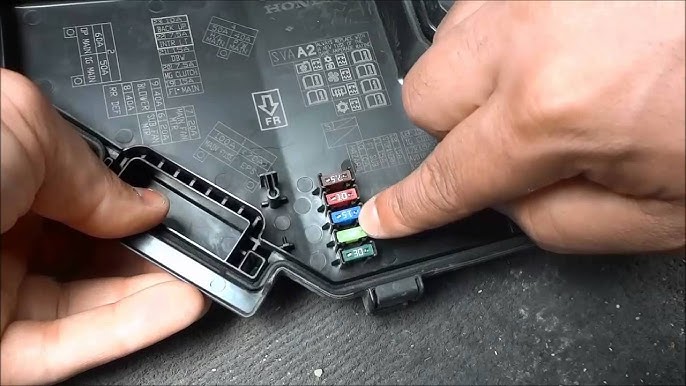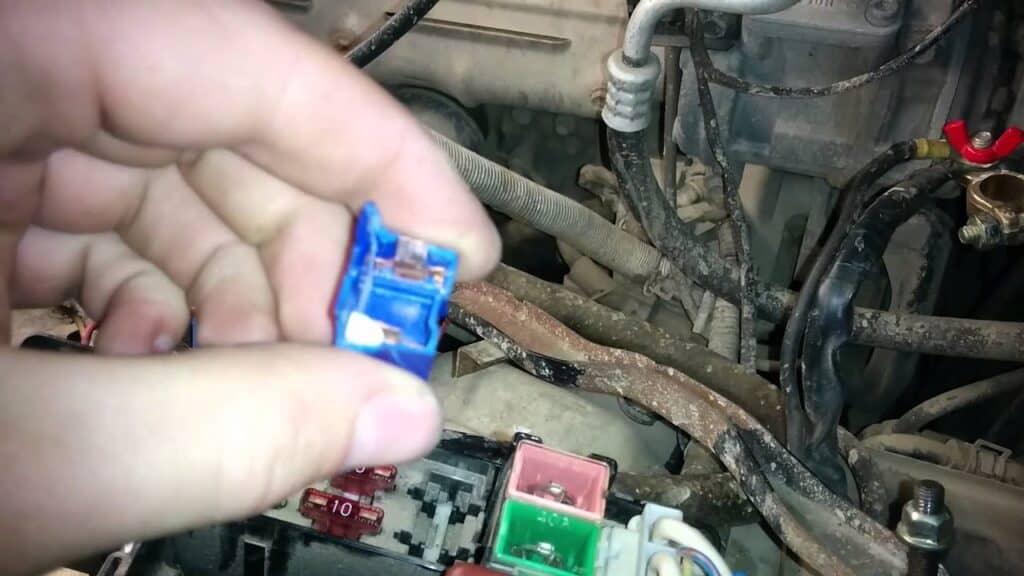An ignition fuse in vehicles helps keep vehicles moving but sometimes, the vehicle fuse may keep blowing. Blowing a fuse is easy to fix before contacting a licensed mechanic by following recommended steps. For instance, check the fuse problem and try replacing the ignition fuse if it is completely damaged.
If you experience ignition fuse blowing every time, the information in this article will help you troubleshoot the problem. Ensure you are more careful when handling vehicle components when repairing or replacing the fuse to avoid damaging other vehicle parts. Further, ensure you follow the steps carefully.
Causes of the ignition fuse blowing

- Poor power cable wiring
Improper wiring of the vehicle fuse may result in the continuous blowing of the fuse. Poor wire connection allows too much current to flow from the vehicle power source, probably the car battery, thus blowing a fuse.
- Engine short-circuiting
Short-circuiting is mainly caused by water dropping on the car engine, restricting the flow of current flow to the power source. Once the engine has short-circuited, it can result in blowing off the fuse.
- Replacing the wrong fuse in your vehicle
Each vehicle requires a different ignition fuse to function correctly. Each manufacturer has a different vehicle design, and they differ from each other unless the cars are of the same model. For instance, some vehicles use a more powerful ignition fuse than others, and therefore using the wrong fuse for your car can continuously blow out your fuse.
If the vehicle fuse has been blown out, consider revising the manufacturer’s manual book to know the type of fuse required for replacement. If the manual book is not available, consider using search engines concerning your vehicle model and the type of fuse that perfectly matches the vehicle. Finally, contact a nearby licensed mechanic to help you identify the best fuse for your car and help you fix the vehicle fuse if you cannot resolve it.
- Power spikes
If the ground wire is poorly connected, power flowing from the vehicle battery may produce spikes that result in fuse blowing. Once power spikes are noticed, consider inspecting the whole vehicle, including the fuse, to identify any damages and how to troubleshoot them before consulting a professional mechanic.
- Inconsistency power supply
Sometimes, vehicle battery damage may result in an inconsistent power supply to start the vehicle. For instance, when the power supply is too high, an increase in resistance blows the ignition fuse.
Also, when the power supply and wire are small in size, it develops more heat which the ignition fuse cannot withstand, thus blowing out the fuse. Therefore, when using power wire, ensure you choose the best power wire that suits your vehicle to prevent continuous blowing of the fuse. Also, the best power wire enables current to flow from the power source freely without damaging the ignition fuse.
- Distorted vehicle amplifier
Sometimes, failure of the vehicle amplifier can result in the fuse blowing out. In this case, the failure of the amplifier fails its components, especially when poorly connected. Once the power supply is turned on with a distorted amplifier, the ignition fuse goes off immediately and will require replacement.
Signs of blown ignition fuse

There are several signs and symptoms of blown-out blown 40 Amp fuse. Such symptoms enable the driver to understand when to replace the blown fuse to prevent further damages. The signs include;
1. Pungent smell
Once the ignition fuse is blown out, a bad strong smell is produced; the pungent smell results from too much heat produced from the power source, the vehicle battery, burning the plastic cover that protects the cable wires.
2. The vehicle engine won’t start
Fuse blowing out fails to allow free flow of power from the vehicle battery, thus hindering the vehicle engine from starting. If your car fails to start, consider checking the fuse condition and other car components for any damages.
3. The engine dies immediately after turning it on
Sometimes the vehicle engine may turn on and instantly turn off before driving, and this is a common sign of failing or blown out blown 40 Amp ignition fuse. After powering the vehicle on, the car engine may start and finally turn off due to engine short-circuiting, resulting in the fuse blowing out.
4. Failure of the vehicle motor
If the vehicle fails to turn on and produce any noise, it is evident that the vehicle fuse or any other components are failing or blown out. First, if you experience such issues, consider examining the whole vehicle, including the entire vehicle components, including the ignition fuse.
Steps on how to fix the 40Amp ignition fuse

Fixing the 40Amp ignition fuse problems usually depend on the cause of fuse blowing. The following steps show how to fix a blown fuse.
Step 1: Inspect the fuse
Before replacing the blown 40 Amp fuse or assuming that the fuse has a problem, inspect the vehicle components, including the vehicle fuse. Inspect the fuse condition, wires connecting the fuse, power source, among others, and identify causes that result in blowing off the ignition fuse.
Step 2: Collect all materials required to fix the fuse issues
Materials required may include a new fuse that fits the vehicle type, replacement wires, wire cutter, screwdriver to open the vehicle components before disconnecting the fuse, etc. Ensure you handle the equipment with a lot of care to prevent further damages.
Step 3: Disconnect the fuse from the vehicle
First, find the location of the vehicle’s ignition fuse. Disconnect the ignition fuse slowly and carefully using appropriate equipment. Ensure the power source is turned off to prevent shock. Further, it is advisable to ground yourself using an anti-wrist band.
Step 4: Replace the blown ignition fuse
If the whole fuse is blown beyond repair, consider buying a new one and reinstalling correctly in its appropriate position. Ensure you follow the manufacturer’s instructions on replacing the blown fuse and the best ignition fuse that suits your vehicle perfectly.
Further, replace the fuse wires if damaged. Finally, consider contacting a licensed mechanic if the problem persists to help you troubleshoot the fuse blown issue.
Step 5: Test the newly installed blown 40 Amp ignition fuse
After reinstalling the new blown 40 Amp ignition fuse and everything back to its position, turn on the vehicle to see if the fuse works perfectly. If the problem persists, repeat the process and then contact a mechanic to help you fix the problem.
Conclusion
So, an ignition fuse is an essential vehicle part that helps the car to function normally. If you experience a blown 40 Amp fuse, the above information will help you fix the issues successfully.
Finally, it is advisable to contact a mechanic if you cannot troubleshoot the problem independently. Further, remember to follow the manufacturer’s instructions and keep the manual book well for future reference.
To know more about Causes of the ignition fuse blowing You should watch this video below;
